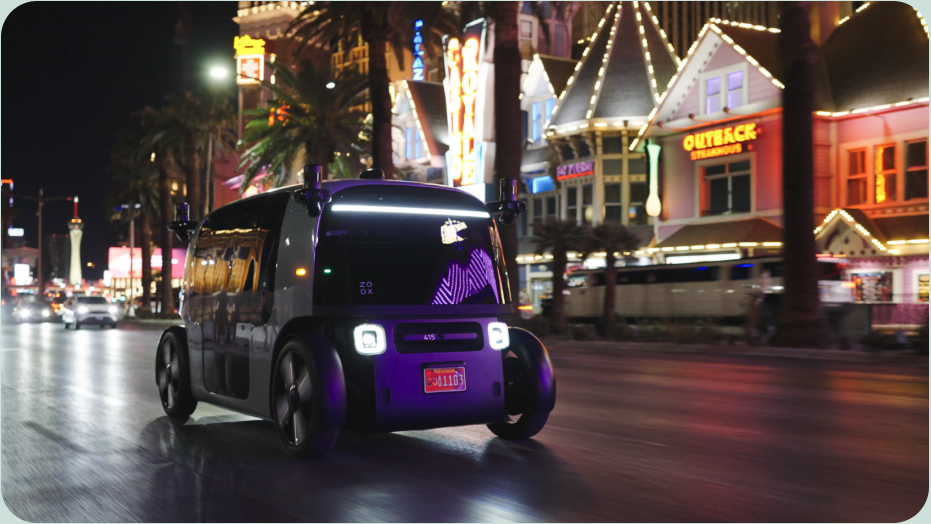Zoox Takes Its Autonomous “Toaster on Wheels” to the Las Vegas Strip
In a significant development for the future of transportation, Amazon-owned Zoox officially launched its fully autonomous ride-hailing service in Las Vegas on Wednesday. This debut marks a crucial milestone for the company as it enters the increasingly competitive robotaxi market, becoming the first to offer rides in a vehicle specifically designed from the ground up to operate without a human driver. While competitors like Waymo and Tesla have modified existing vehicle designs, Zoox has taken a fundamentally different approach with its purpose-built vehicle—affectionately dubbed a “toaster on wheels” by some observers due to its boxy, symmetrical appearance that lacks a traditional front or back.
The Las Vegas launch positions Zoox among a select group of companies pioneering autonomous ride services in American cities. Currently, Alphabet’s Waymo offers self-driving rides in five metropolitan areas: San Francisco, Los Angeles, Phoenix, Atlanta, and Austin. Tesla recently joined the competition with its own autonomous service in Austin. However, Zoox’s entry comes with a distinctive approach—the company is initially offering free rides along the famous Las Vegas Strip and surrounding areas while it navigates the regulatory process required to charge passengers. This strategy allows Zoox to gather real-world operational data and refine its service while building consumer awareness and comfort with its unique vehicles.
What makes Zoox’s approach particularly noteworthy is its commitment to designing a vehicle specifically for autonomous operation rather than retrofitting existing cars with self-driving technology. In its announcement, the company emphasized being the first to provide rides in a “purpose-built robotaxi”—a vehicle with no steering wheel, pedals, or conventional controls that a human driver would use. This stands in contrast to Waymo’s partnership model, which adapts vehicles from established manufacturers like Jaguar and Hyundai. The Zoox vehicle features bidirectional capabilities and a spacious interior designed to maximize passenger comfort and convenience, reflecting the company’s vision that autonomous vehicles should not merely remove the driver but reimagine the entire transportation experience.
Las Vegas represents just the beginning of Zoox’s ambitious expansion plans. The company has already identified San Francisco as its next target market, with additional cities on its roadmap for future deployment. However, Zoox faces the challenge of catching up to Waymo, which has established a significant head start in the robotaxi industry and recently announced plans to expand to Miami, Washington, D.C., and Dallas in 2026. Waymo has also begun testing vehicles in Seattle—notably in Amazon’s home territory—indicating the intensifying competition in this space. Zoox’s ability to scale quickly while maintaining safety standards will be crucial to its competitive position in the coming years.
Amazon’s $1.3 billion acquisition of Zoox in 2020 placed the autonomous vehicle company within the tech giant’s devices and services business unit. This substantial investment demonstrates Amazon’s commitment to establishing a presence in the future of transportation, though the company has been relatively quiet about how Zoox integrates with its broader strategic vision. While many speculated that Amazon might leverage autonomous technology primarily for delivery services, the focus on passenger transportation suggests a more diversified approach to the potential applications of self-driving technology. The Las Vegas launch represents Amazon’s first major public deployment in the consumer autonomous vehicle space since the acquisition.
The road ahead for Zoox includes significant regulatory and technological challenges. Just last month, the company secured a crucial exemption from federal regulators that permits it to demonstrate its vehicles on public roads—a necessary step before wider commercial deployment. This regulatory progress, combined with the Las Vegas launch, indicates that Zoox is gaining momentum after years of development work. As the robotaxi industry continues to evolve, the coming months will reveal whether Zoox’s distinctive approach to vehicle design and deployment strategy can successfully compete with more established players like Waymo and newer entrants like Tesla. For residents and visitors in Las Vegas, the appearance of these distinctive autonomous vehicles on the Strip represents not just a new transportation option but a glimpse into a future where cars drive themselves and the concept of personal car ownership may fundamentally change.


